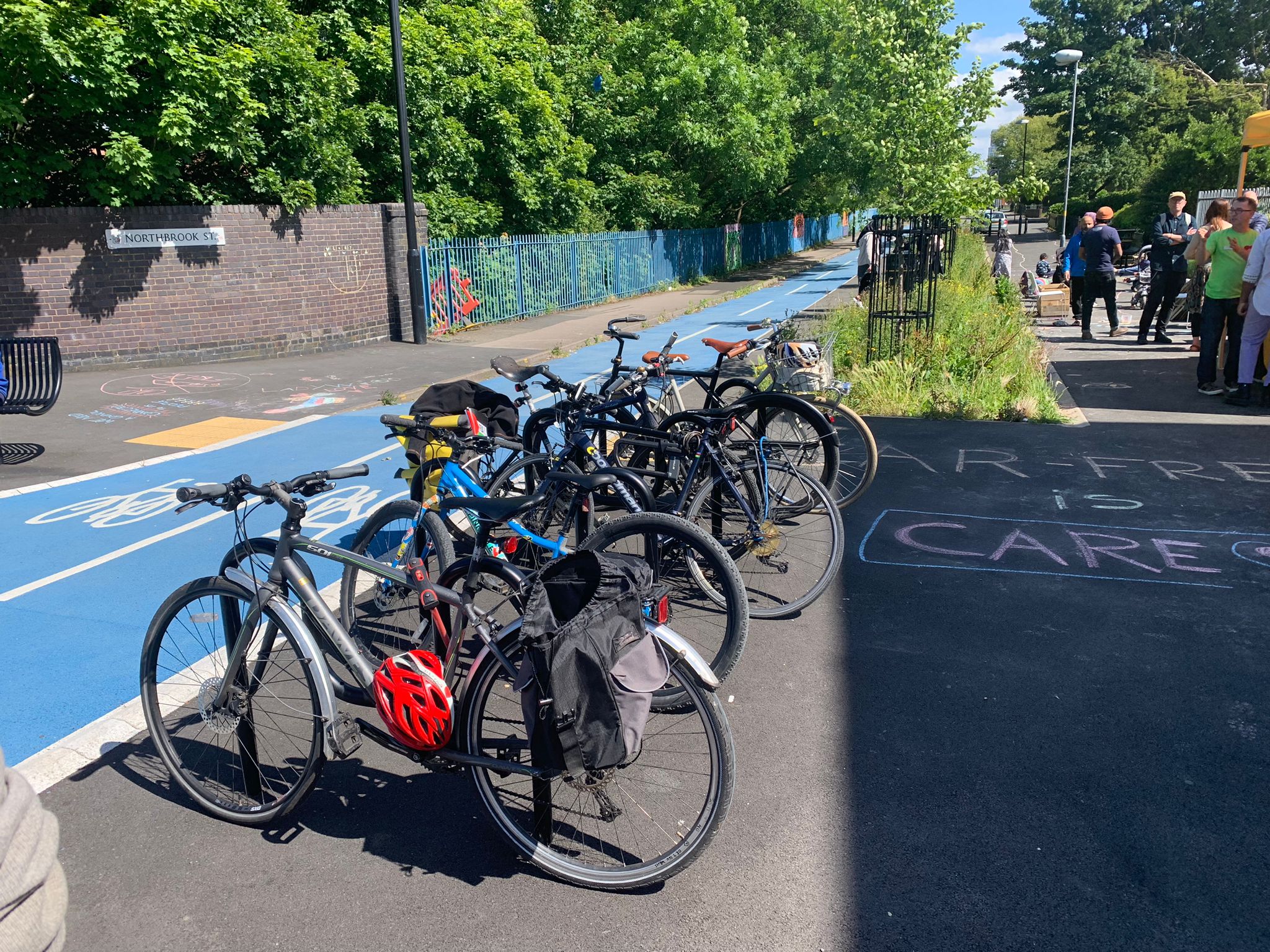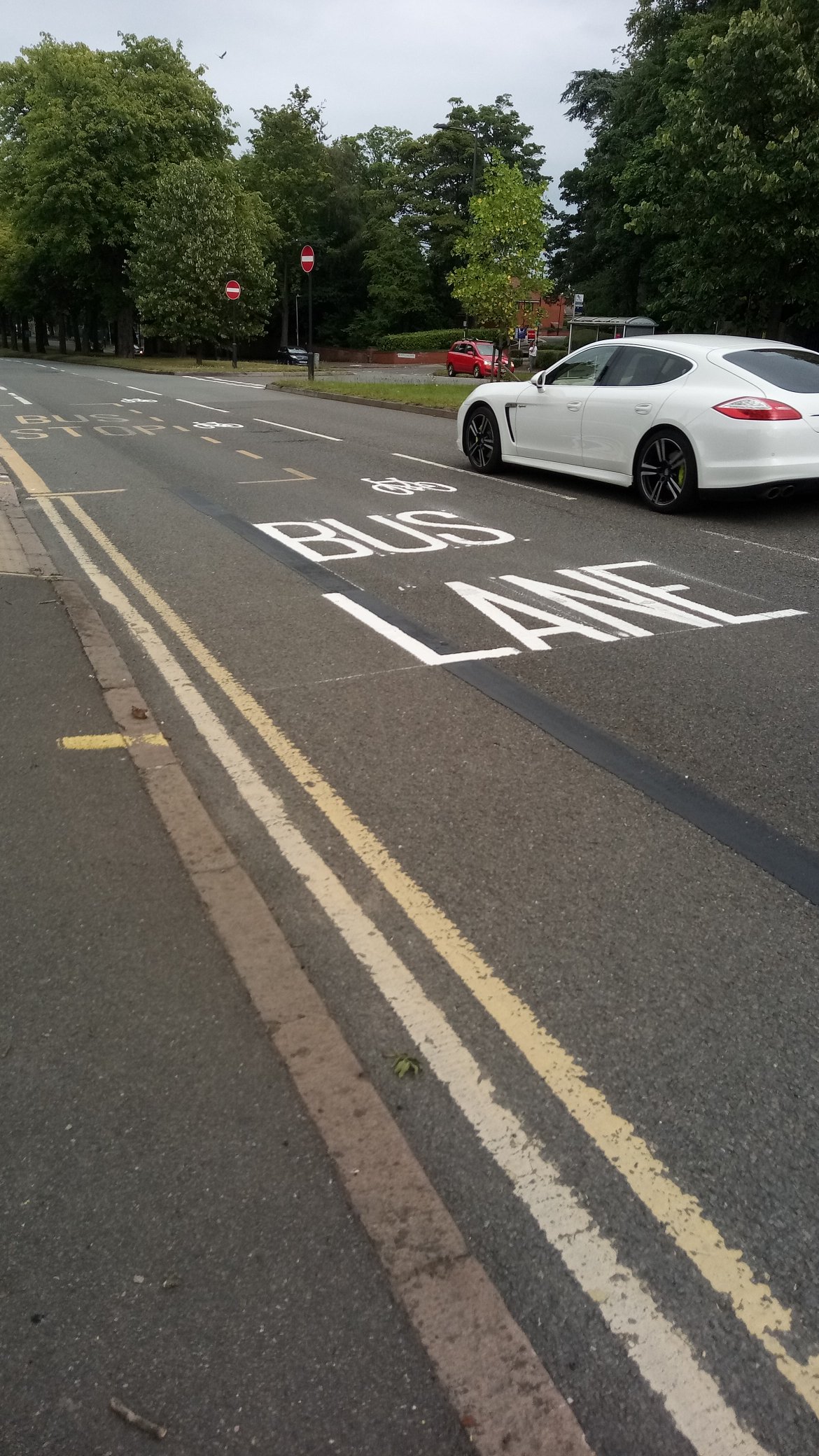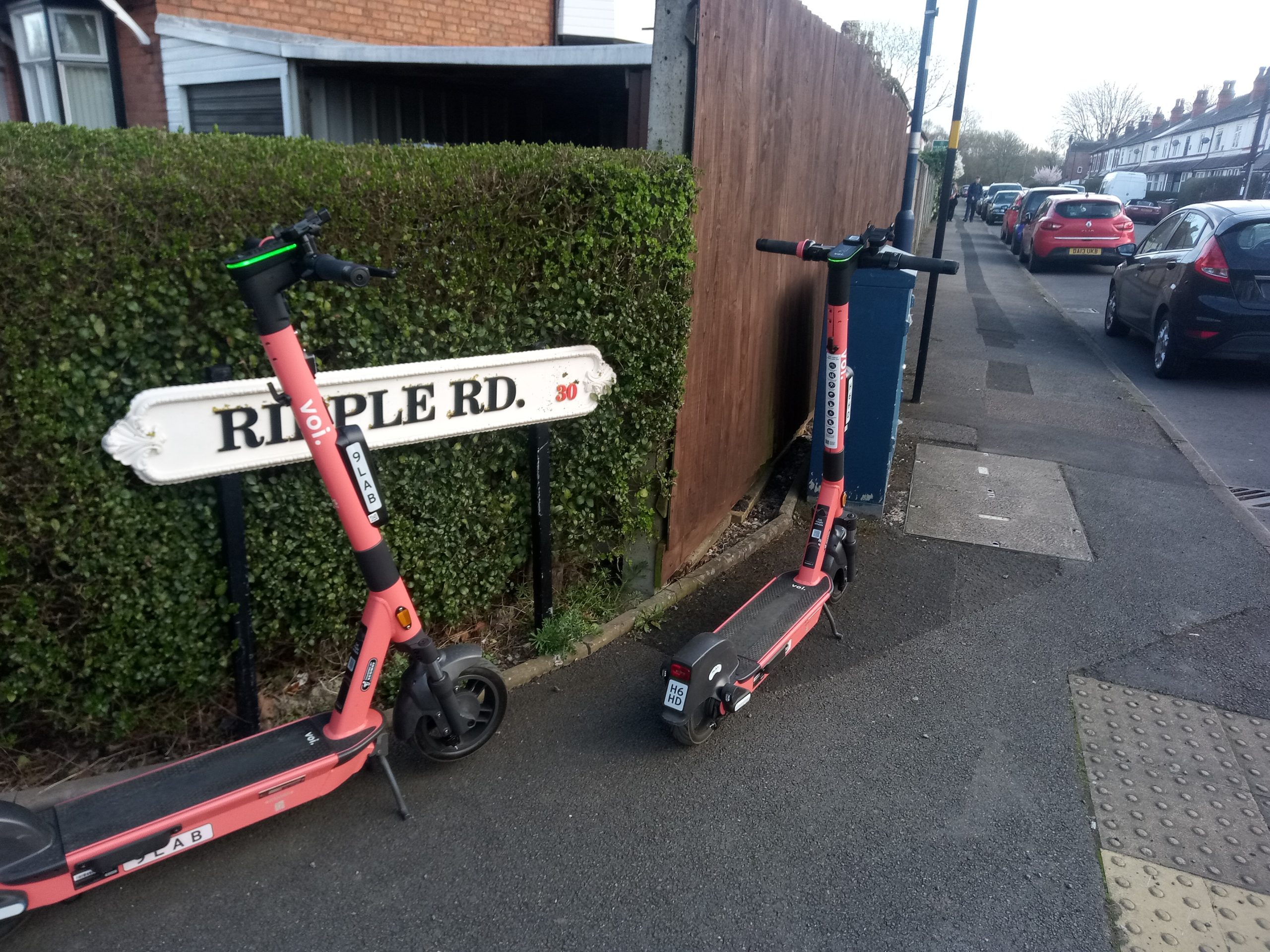I first learned to ride a bike when I was 25 so my perspective on cycling is different to most people. Not being able to cycle was embarrassing growing up. The London 2012 Olympics inspired me to finally learn properly, and once I could cycle properly, I valued the ability greatly. I previously thought that I would never be able to cycle.
Let’s Get Moving!
In 2013 Birmingham Friends of the Earth launched (BFOE) a campaign called “Let’s Get Moving!” The aim of this campaign was to reduce the dangerous levels of air pollution caused by motor traffic, by investing in walking and cycling infrastructure. In 2013 we used to quote the figure that 520 people a year prematurely died in Birmingham because of the poor air quality in the city. Motor traffic was the biggest contributor to this. The solution that we proposed was for the council to spend £10 per person on walking and cycling infrastructure and move away from prioritising the motor vehicle, in our transport system.
I was a passionate newbie cyclist, who was very keen to get involved in the campaign. I became the head of the campaign. As head of the campaign, I got stuck into the cycling side of it. Other people focused on the air pollution aspect of the campaign. BFOE campaigners tested the air quality on some of the worst polluted roads in Birmingham. Unsurprisingly, the air quality on these roads were at dangerously high and illegal levels.
Early in the campaign Birmingham City Council (BCC) announced that they were going to spend £24 million on cycling over the next two years. Success! Our main campaign ask was achieved so we ended the campaign then. Of course, the campaign continued. Our concern was that once this two years’ worth of money was spent, would that level of spending be maintained going forward?
Birmingham Cycling Revolution (BCR)
BCC announced what they were going to do with this £24 million allocated for cycling. I had very mixed feelings on the plans. We all knew that only 1% of commutes were made by bicycle and significant changes needed to happen to increase this. BCC dubbed the proposed changes the Birmingham Cycling Revolution. A whole host of measures were announced from handing out free bikes, to main road arterial cycle routes.
Some of the proposals had a mixed reception from myself. About a quarter of the money was spent on resurfacing the canals in Birmingham, to make them cycle friendly. Now this was a good thing to do, but canals can not handle large volumes of cyclists and there was no way that the money spend on canals would significantly increase the number of cyclists in Birmingham. Millions went to 20mph signs as lots of roads in Birmingham had their speed limits reduced from 30mph to 20mph. I thought this was a disgraceful misuse of the money. Whilst we were in support of lowering speed limits, that money should have come from another pot and not the BCR pot. 20mph does benefit cyclists, but it also benefits car drivers, pedestrians etc, so for money allocated just for cycling to pay for this was a poor use of the money.
On the plus side BCC handed out 5000 bikes for free and provided free cycle training. These were good measures that were visible and helped raise the profile of cycling in the city. Orange BCR bikes became a common sight across the city. What they would not do though, is significantly increase the number of cyclists in the city. The main route to that is spending money on dedicated cycling infrastructure. The initial plans were very ambitious and included routes from Harborne to Small Heath on the main arterial roads of the city. These plans would have involved reallocating road space from cars and removing car parking spaces. Birmingham is a car dominated city and cycling has been marginalised. The proposed segregated cycle routes in the BCR received a lot of criticism from a wide range of people as the car lobby is strong. Money for cycling was seen by many as a waste of money and in some cases as part of the war on motorist. (More on the war on motorists another time) Due to the controversial nature of the plans, most of the proposed routes never happened. Two survived and were built. I’ll come back to them later.
During the Let’s Get Moving campaign I attended the BCR consultations and scrutinised the plans along with Pushbikes and Sustrans. We were concerned that once the two years of money was spent, cycling funding would fall off a cliff. We were also concerned that the main arterial segregated cycling routes would not happen. As campaigners we knew that they would have the most positive impact for cyclists, but they were also the most controversial. For them to come to fruition BCC would receive a lot of criticism. I also helped to organise a comedy gig for the Let’s Get Moving campaign. I even filmed a cycling campaigning video with a friend (https://www.youtube.com/watch?v=esB58sFO41o)
What happened when the revolution ended?
After the two years of the BCR, our fears were realised. Some further funding for cycling was provided, but no where near the levels of the two years previous. BFOE moved onto another campaign. I feared that the momentum of the BCR would fade away. I stopped attending the cycle forums and focussed on other campaigns. In 2017 I noticed plans to construct two segregated cycle lanes in the city. One on the A34 and one on the A38. The A38 is known as the Bristol Road in Birmingham and is one of the main roads that is near to my house. An announcement was made that construction was to begin on these two routes. The A34 and A38 were picked because they are roads wide enough to build cycle paths that would not need road space to be reallocated from cars. Work began on the cycle paths, which created a lot of disruption and the roadworks annoyed a lot of motorists, many of whom, were not fans of the cycle paths. The blue lanes started to take shape, and as time went by the path began to form a cohesive cycle route. The A34 opened first, while the A38 route opened late.
Delayed gratification
I was extremely excited to have a go at cycling on the new cycle paths. They met Pushbikes high standards of cycle infrastructure, which was good enough for me. I got on my bike and cycled to the Selly Oak end of the A38 route. The blue lanes glistened in the sun and where separate from car interaction. I cycled towards the city centre and it was soon apparent as to how easy and comfortable the cycle path is to use. Most of the other people using the cycle path were not wearing a high vis or a helmet. Because the cycle path felt safe to ride, the cyclists had no need to wear protective gear. I stopped at several points to inspect the route. At one point a car was parked right in the middle of the path so I had to unsaddle to walk my bike around the car. I got back on my bike and cycled to the end of the route, which randomly ends in between a gay bar and a Thai boxing gym, away from the main road.
It was a joyous experience to ride the A38 route and deeply satisfying. It took over five years from the start of the BCR to get to this point. At many points I thought that no segregated cycle routes would be built in Birmingham, but eventually I was proved wrong. I like to think that BFOE and myself played our part in helping achieve this momentous achievement. We need more cycle paths like this, and we will continue to lobby BCC until they happen. However, it is nice to reflect on the successes that we do have from time to time. I continue to use the A38 cycle route and I do so with a big smile on my face, even when it is raining.









2 Responses